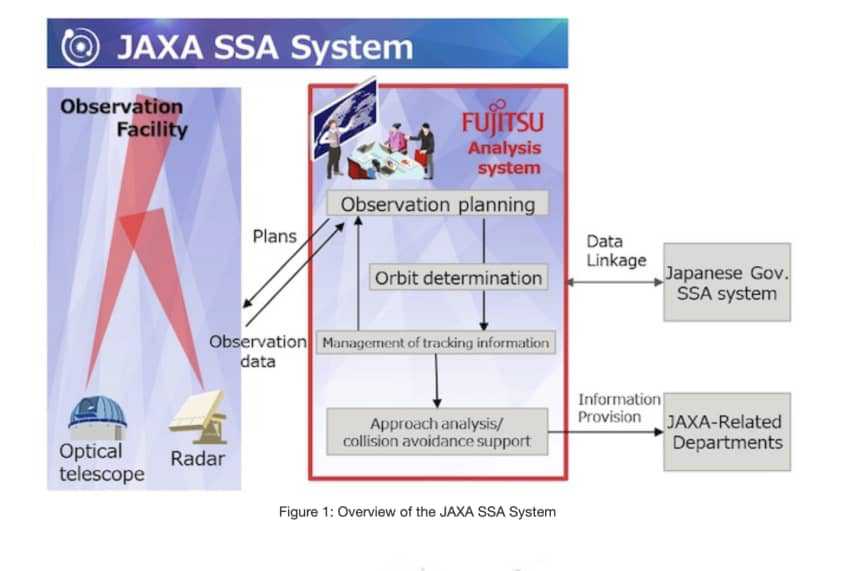Fujitsu develops new technology for mapping and analyzing space debris
11 April, 2022

Fujitsu has announced the development and deployment of a new analysis system to calculate orbital courses of space debris for use with the Japan Aerospace Exploration Agency's (JAXA) Space Situational Awareness System (SSA system) for monitoring space debris.
JAXA started operations of the new system at the Tsukuba Space Center on April 1. JAXA will utilize the new technology to create plans on effective space debris observation, drawing on observation data from radar and optical telescope to calculate the trajectory of space debris and perform comparative analysis with the path of JAXA satellites. In case the system detects space debris approaching satellites, it will support the operators at JAXA in quickly responding to risks and avoid any possible collisions with the space debris by automatically calculating the possibility of a predicted collision and necessary course changes.
Space debris like detritus from rocket launches, decommissioned satellites, and fragments of other artificial objects in orbit around the planet from explosions or collisions poses an increasingly severe problem for the future of sustainable development beyond our world. Experts estimate that the number of pieces of debris currently floating in space is more than 100 million, and the number continues to increase. Space debris can move at speeds of more than 7 km/s around the Earth and is thus powerful enough to cause severe damage to the approximately 12,000 artificial satellites in space. This presents a serious risk to critical infrastructure, with satellites playing an indispensable role in weather forecasts, disaster monitoring, and mapping applications.
Fujitsu has been supporting JAXA in its efforts to solve this problem since the early 1990s by creating technology for space debris observation that utilizes orbit determination technology (the predecessor of the current SSA system) that has also been used with the Hayabusa2 asteroid probe and other important projects.
About the new system
JAXA's SSA system consists of a radar, an optical telescope, and a Fujitsu-developed analysis system. The analysis system serves as the core of the SSA system, and allows JAXA's system operators to create plans on effective space debris observation, the management of acquired observation data, and the analysis of orbit tracking calculations to support the detection of space debris approaching satellites and avoiding collisions. The features of the analysis technology are as follows.
-- Timely identification of collision risks through optimal observation plans and improvement of observation data processing capacity
To further improve the SSA system, JAXA's new radar has been designed to also capture smaller objects and to observe about 10,000 objects per day (more than 10 times the number of conventional radars).
In addition, the analysis system's processing capacity has been raised by more than 50 times to enable the timely processing of large amounts of observation data and support rapid risk assessment by immediately providing JAXA's satellite operators with necessary information about the possibility of a predicted collision and necessary course changes to avoid any possible collisions with space debris.
-- Automation of routine tasks and reduction of operational load on system operators
As a measure to reduce the operational load on system operators related to the increased number of observation objects and processes, Fujitsu has developed a new function to automatize routine work such as the creation of observation plans and the processing of observation data, which had been mainly performed manually by analysis operators.
Through the reduction in operational load and the improvement of the efficiency of the analysis system, operators can focus on confirming processing results and responding to emergencies.
-- Interconnection with the SSA system of the Japanese government
The new analysis system can be connected to JAXA's SSA system as well as to the SSA system operated and managed by the Japanese government in order to share observation data. In this way, the new tool enables operators to reply to observation requests from the Japanese government and conduct efficient observations.
Source: japantoday.com
TAG(s):
